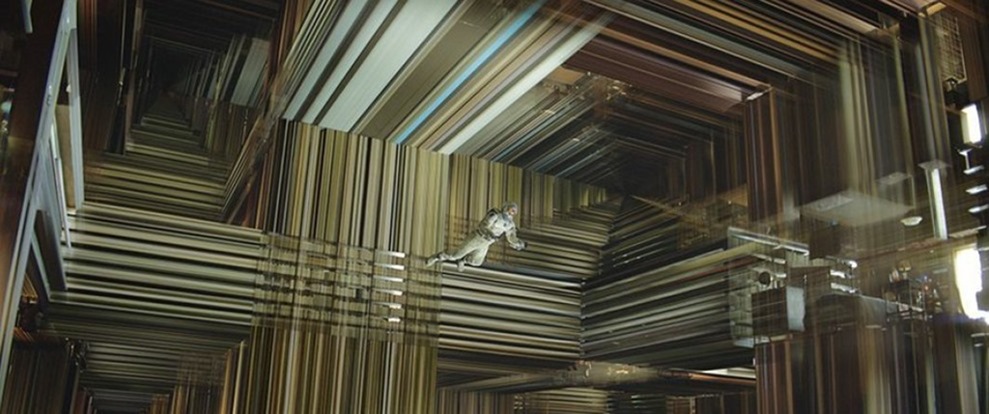Trying to imagine objects in more than three dimensions can feel like an exercise in futility. The most straightforward method for imaging four-dimensions (for me) is to imagine any object in three-dimensional space and using time as an additional dimension.This works, kind of, but utterly falls apart when you consider a fifth-dimensions, I mean how do you measure it?
In purely mathematical terms a single point on a line can be described by one coordinate as in [X], to go to two-dimensions, you would need two digits like this [X, Y], basically describing a point on graph. Three-dimensions simply adds another coordinate on the Z plane [X,Y,Z] and this is where most normal humans stop understanding, at least theoretically, how to describe multi-dimensional space.
Several Sci-Fi movies have attempted to enable us to visualize the four or five dimensional equivalent of a cube called a tesseract, most fail miserably (I am looking at you Avengers) but I did like the way Interstellar tried to help us visualize navigating this theoretical phenomenon. Interstellar attempted to present both time and gravity as the additional dimension to the 3D world (a single bedroom), giving the the protagonist, with aid of gravity, a mechanism for communicating across both space and time into any single lived moment.
Sphere Packing Solved in Higher Dimensions
Imaging additional dimensions is a difficult exercise but then solving non trivial mathematical problems in higher dimensions is mind boggling. A Ukrainian mathematician has done just that in dimensions 8 and 24. Here is an excerpt of the premise:
In a pair of papers posted online this month, a Ukrainian mathematician has solved two high-dimensional versions of the centuries-old “sphere packing” problem. In dimensions eight and 24 (the latter dimension in collaboration with other researchers), she has proved that two highly symmetrical arrangements pack spheres together in the densest possible way.
Mathematicians have been studying sphere packings since at least 1611, when Johannes Kepler conjectured that the densest way to pack together equal-sized spheres in space is the familiar pyramidal piling of oranges seen in grocery stores. Despite the problem’s seeming simplicity, it was not settled until 1998, when Thomas Hales, now of the University of Pittsburgh, finally proved Kepler’s conjecture in 250 pages of mathematical arguments combined with mammoth computer calculations.
Packing in higher dimensions seems completely impractical but actually applies directly to the error-correcting codes used by cell phones and the way in which we seends signals through noisy channels like our internet.
If all this is just a little to difficult to imagine (it was for me) check out the new Infinite series from PBS, where Mathematician Kelsey Houston-Edwards explains higher dimensional objects in much more accessible terms.


Comments are closed.